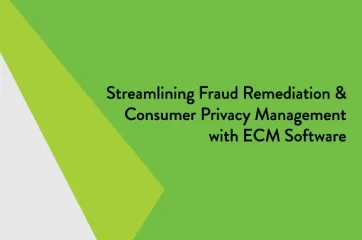Core banking solutions serve as the central repository of account and general ledger information for financial institutions. Many cores also provide a platform to power online banking and ATMs.
Core Banking Systems’ Account Information
A bank or credit union’s core system stores account-related data, including:
- Account numbers
- Customer and member information
- Balances
- Monthly payment due dates (for loans)
Additionally, a core system performs transactional functions, such as computing accrued interest on CDs and savings accounts, calculating interest earnings on loans, determining new loan payments based on escrow overages/shortages, and updating interest rates tied to indexes.
Departments Using the Core Banking System
Most employees at a financial institution depend on the core banking solution in some way. Employees handling new accounts enter customer or member data and generate signature cards through the institution’s core system. Teller modules for check cashing and deposits update the core system. Loan officers rely on information from the core to answer questions about amounts owed, past-dues, and collateral.
Generally, a financial institution’s core banking system integrates with the bank or credit union’s accounting system, which makes it easier for back-office users to calculate figures (daily deposits, assets, liabilities, total outstanding loan amounts) and accounting staff to balance the general ledger.
Automated Functions
A financial institution also relies on its core system to increase efficiency through automated features, such as:
- Payment notices
- Rate change notices
- Past-due notices
- Cure letters
- Checking statements
- Internal reports
Third-Party Integrations
Core banking systems typically offer a variety of add-on modules, such as document imaging and exception tracking. Native add-ons are convenient and sometimes included in the bank or credit union’s total contract with the core provider. However, some core-provided add-on modules lack the functionality that growing institutions require.
That’s why software developers, such as Alogent, create core-integrated products that offer enhanced functionality. Examples of third-party applications include document imaging products, loan exception tracking tools, e-sign modules, reporting engines, and portfolio analyzers.
Core Banking System Integration Resources
Looking for more information about AccuAccount’s core-integrated capabilities to increase your financial institution’s efficiency? Check out AccuAccount for loan account management and AccuDoc for bank-wide imaging. For a list of available core integrations, download our integrations PDF.
Browse our banking definitions page for more terminology.














